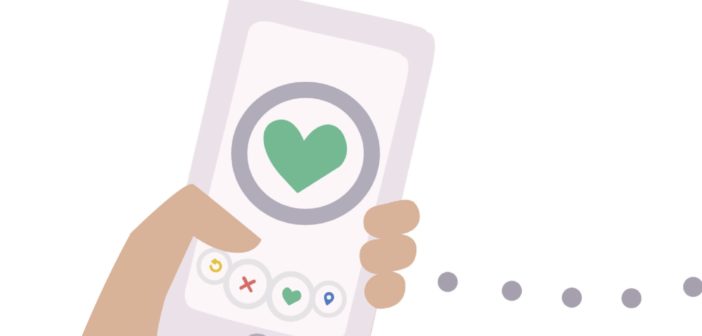You get on Tinder and start swiping right. You get a match. Once you get that match, you’re consenting to chat with your match for a little, meeting up and hooking up. That is the cycle of Tinder.
Well, that is what some users on Tinder think they are consenting to.
On its official website, Tinder defines itself as “the world’s most popular app for meeting new people.” Even though this is what it describes itself as, Tinder has a well-known stigma.
Stereotypically, Tinder is known as a hook-up app. It is a place where you can score a one-night stand with ease. You match and bang. But where is the consent in that?
According to the Business of Apps, there are 57 million Tinder users around the world. With that many users, consent is impossible to be viewed equally. Professor of Communication and Faculty of Gender and Sexuality Studies Mara Berkland defines consent as “explicit affirmation of permission.”
“If I said ‘can I borrow your phone right now?’ and you didn’t answer, but I take it, you haven’t given consent,” said Berkland.
Consent is a straight-forward concept. Yet, online it is blurred. When one swipes right and gets a match, communication between both users is granted. A match consents to at least talking between both users. However, this is not an indication of sexual consent. Even though Tinder is known as a hook-up app, that doesn’t mean everyone has the same motive.
According to Psychology Today, a 2017 study surveyed 395 young adults on why they joined Tinder. Their ages ranged from 18 to 34.
The most common reason for joining Tinder was the hype surrounding the app. It was found that 48.3% of participants said Tinder’s popularity got them to join, as opposed to the 5.1% that joined to find casual sex.
Even with a small number of users intending to use Tinder for finding casual sex, that doesn’t mean that users don’t expect some sort of physical activity to occur. Assistant Professor of Sociology Anne Groggel has conducted her own research going deeper on consent and Tinder.
“We started first with qualitative interviews, using a vignette, which is a description of a scenario, just kind of unpacking students’ meanings of consent,” said Groggel. “In other years, we conducted a survey asking students’ meaning of consent just on Tinder interactions. So, we ask questions like … are they consenting to sexual intercourse, or kissing or oral sex and then we tested for differences, between men and women’s perceptions.”
In the years in which Groggel conducted this survey, it was overwhelmingly found that students believed if you match on Tinder and meet up, you are consenting to at least making out.
“There is uniformity in that. Everyone agrees,” said Groggel.
Before even meeting face-to-face, the belief that some sort of physical activity will occur is there.
But there is a significant gender difference with the belief of consenting to either oral sex or sexual intercourse while using Tinder. In Groggel’s survey, it was found that male students were more likely to believe that when you match on Tinder and meet up, you’re consenting to either oral sex or sexual intercourse.
“So (what) that means (is) that when two individuals are going to meet up, the men might have higher expectations of intimacy than women,” said Groggel.
Different genders are more likely to interpret consent differently. When individuals have different expectations, dangerous outcomes may occur, such as sexual assault.
“That should have no indication like you might be conveying interest but you’re not consenting to making out,” said Groggel. “Before you ever meet someone face-to-face, those are interaction cues that you need to give off, that consent is constantly given and needs to be re-given.”
So, this brings up an important question: Why is consenting a difficult concept to understand?
“(It is) because we teach people sex is different for them,” said Berkland. “We are still infusing our young people with the expectation that men should want sex all the time and that women are responsible for keeping it away from them.”
Sexual education hasn’t changed. According to the Washington Post’s article “Why we shouldn’t be separating boys and girls for sex ed,” it is still a common practice for boys and girls to be separated when receiving sex education. However, in a study that surveyed high school students, 65% actually prefer mixed-gender instruction.
Teaching sex in different ways to both genders could lead to continuing misconceptions and stereotypes. Historically, the topic of sex hasn’t been discussed as sex is seen as “taboo.”
“The reason it is, is because we have so many historical issues with sexuality being considered dirty, or wrong or problematic,” said Berkland. “Then we have gender issues regarding women, who are not technically allowed … positive affinitive permission to do sexual acts.”
We live in an age where it is more common to meet your romantic partner online. We are switching from the classic face-to-face communication to the modern digital form of communication. According to eHarmony, 40% of Americans use online dating while 20% of current, committed relationships began online.
Apps like Tinder are here to stay but if we don’t give more attention to the meanings we attach to online interactions, interpretation will be up in the air.
“This is the whole problem, is that we are not comfortable talking about relationship negotiation,” said Berkland.

